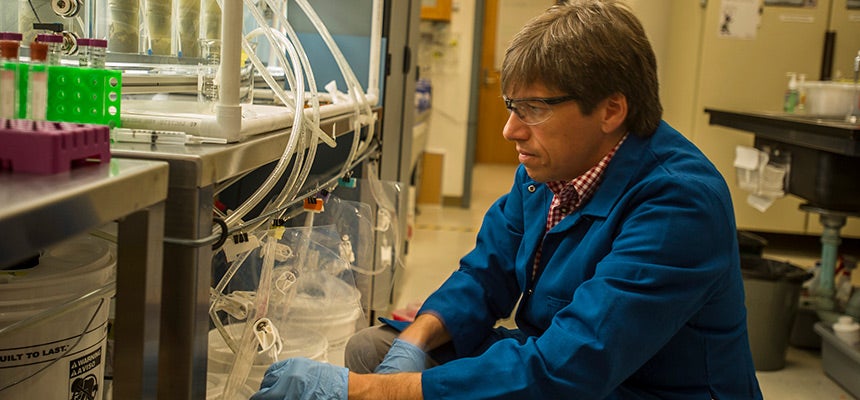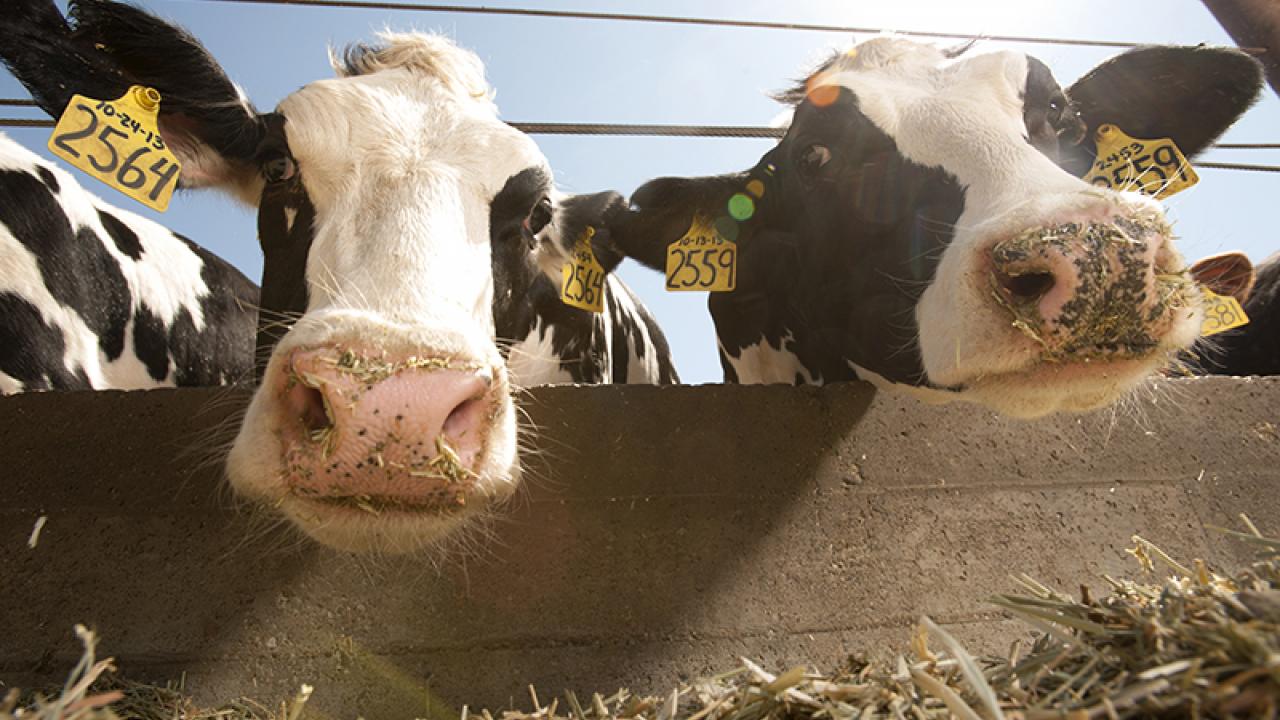While the contents of a cow’s stomach may not be something most of us care to think about, the idea is worth our paying attention, according to Matthias Hess, a microbiologist and assistant professor in the Department of Animal Science at UC Davis.
Hess spends his day studying microbiomes, communities of tiny microbes like bacteria, fungi and protozoa that make up the combined genetic material in the bovine gut. One chamber of a cow’s stomach — called the rumen — is home to more than one quadrillion microbes. The microbes help break down grasses the cow eats and convert them to metabolic energy.
Hess says the rumen microbiome is an underexplored resource. It teems with microbial enzymes and metabolites that can benefit animals, humans and the planet.
Hess has built an artificial cow gut system in his lab, where he can study how microbes interact without harming the animal.
Better biofuels, less greenhouse gas

“We are trying to find novel microbes and novel enzymes that might help us make other industrial processes more sustainable,” says Hess.
One example: using cow rumen enzymes for better biofuels. “We know these microbiome communities are really efficient at breaking down biomass, so we want to find these enzymes that we can eventually use to improve biofuel production.”
Enzymes can also be used to improve feed for cows. When cows belch, they emit large amounts of methane, a potent greenhouse gas. Companies are already offering enzyme mixtures to add to cows’ feed to make it more digestible.
“If we can optimize that, it’s healthier for the planet and for the ecosystem,” Hess says. Farmers also can feed cows less, so this more digestible feed is economical for the farmer, too. “The cow generates more milk and more meat for the amount of feed you have to provide.”
Fight against antibiotic resistance
A cow’s gut also contains antimicrobial peptides, or AMPs. These small proteins are promising alternatives to currently available antibiotics. Hess recently co-authored a study looking at three such antimicrobial peptides.
“What is most exciting is that we found novel AMPs that seemed to be active against pathogens that have shown to be resistant to antibiotics that are widely used,” Hess says. The study found one of these was effective against methicillin-resistant Staphylococcus aureus, or MRSA, a type of staph bacteria that can cause skin infections and is resistant to several types of antibiotics.
He says more research needs to be done, but the cow’s rumen appears to be a good source for new antimicrobials.
Amy Quinton is the science and agricultural writer for Strategic Communications.
